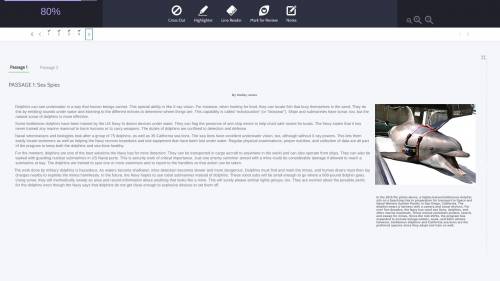
English, 26.10.2021 06:50 desiwill01
PASSAGE 2
The use of carrier pigeons in World Wars I and II is well known. They carried a small canister with a message inside and were often the only way for soldiers to communicate with their headquarters. Pigeons were well suited to this task. They had a homing ability to fly back to headquarters, and they flew fast—like little rockets! Enemy soldiers would try to shoot down pigeons because they knew that these birds might be carrying vitally important information.
The use of pigeons in communications started a long time before either of the World Wars. Over 2,500 years ago, the King of Persia utilized carrier pigeons to transport messages back and forth in his empire.
While it seems plausible that a bird can carry a message, you would not suspect a bird of spying on you! During the Cold War, US government animal psychologists trained ravens to eavesdrop on foreign powers. The ravens were trained to carry a piece of slate. They were also trained to fly to a specific window ledge outside a foreign government office, deposit the slate, and then fly off again. The slate contained a miniature electronic listening device that was powerful enough to record and transmit conversations from inside the office.
The ravens were chosen among other birds because they offered several advantages. They could operate well on their own. They were good at recognizing patterns and responding to different groups of objects. For example, a raven could be trained to fly straight to a filing cabinet rather than to a table. Ravens are also physically strong birds. They could be trained to carry relatively large loads in their beaks and to open file drawers. By coincidence, a “raven” in spy jargon also means an agent operating on his or her own.
The difference between the use made of the ravens and the pigeons was in the training. The use of pigeons to carry messages relied on the pigeons knowing how to return to one particular place. Certain breeds of pigeons do this naturally. How they do it is still not well understood. Possible explanations include using the sun, smell, and the Earth’s magnetic field.
By comparison, the ravens were specifically taught to perform certain actions. Facilities for training the ravens were extensive. On a farm covering 270 acres, designers made mock buildings and facades (like a movie set). The animal psychologists used positive reinforcement. When a raven performed an action correctly, it received a reward (such as something tasty to eat). If the action was to go to a certain window, a laser beam was shone on the window. The raven learned to see the laser beam as an instruction to go to a specific window. While pigeons can also be trained in the same way, the particular characteristics of the raven made it the first choice for this highly unusual form of spying.
Think about the ideas in the two passages, and then write an explanatory essay explaining how and why certain animals are used as secret agents.


Answers: 1


Another question on English

English, 21.06.2019 17:10
Which of the following describes a method of using chronological order?
Answers: 1

English, 22.06.2019 03:30
How do "the jilting of granny weatherall" and "the love somg of j alfred prufrock" differ?
Answers: 3

English, 22.06.2019 08:00
Once soueif's and her nieces join the protest, there is a distinct shift in the tone.
Answers: 3

English, 22.06.2019 09:00
What is the correct definition of a canal? a) a machine that picks cotton faster b) a large entity that can carry heavy loads c) a man made ditch filled with water d) a boat that can travel up the current
Answers: 2
You know the right answer?
PASSAGE 2
The use of carrier pigeons in World Wars I and II is well known. They carried a small ca...
Questions



Business, 15.12.2020 23:00





English, 15.12.2020 23:00




Chemistry, 15.12.2020 23:00

Mathematics, 15.12.2020 23:00


History, 15.12.2020 23:00



Mathematics, 15.12.2020 23:00

Mathematics, 15.12.2020 23:00




